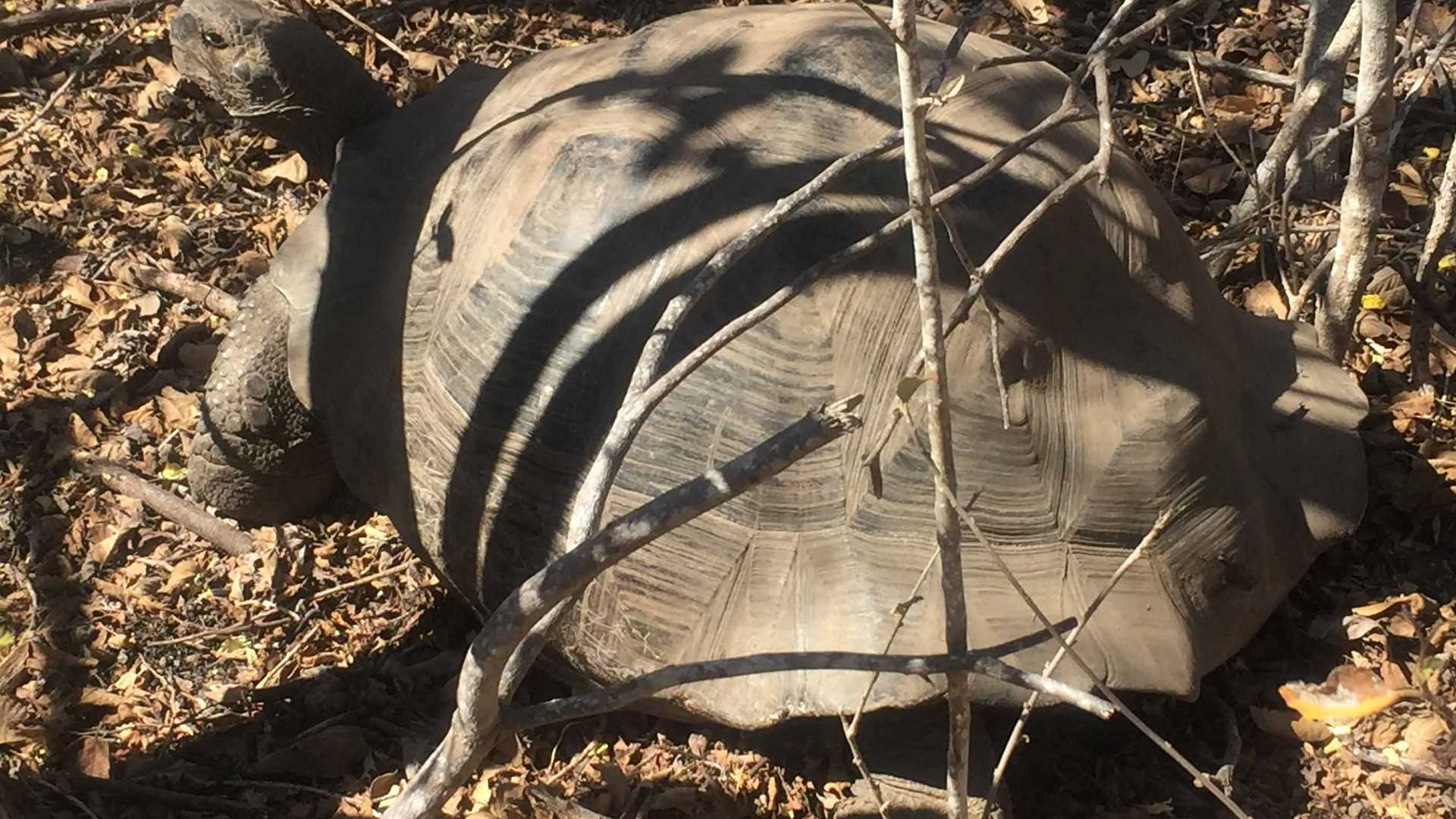Separated from Fernandina by the Bolivar Channel, Isabela was baptized after the Queen of Spain Isabel de Castilla who financed and supported Columbus in his journey to America in 1492. Isabela Island is by far the largest of the archipelago; with an area of four thousand square kilometers this island has five active volcanoes and is home of unique endemic creatures and the two flightless birds: the Galapagos penguin and cormorants.
Early in the morning, theNational Geographic Endeavour dropped anchor at the foot of Alcedo Volcano. Alcedo is known throughout the world for having the largest endemic tortoise population. Here is where we have organized our early morning visit with a wet landing on a black sandy beach followed by a walk where we expected to see attractions found only here. Walking inland, we observed the endemic and native vegetation that conquered this area that few years ago was submerged undersea and in 1954 was uplifted, changing dramatically the shore of the island. Soon, on the path we have a large territorial Galapagos land iguana in very bright colors, lying down close to a number of burrows where others nest. In the same area there was an adult giant tortoise rested under the bushes observing us indifferently, while in the air two Galapagos hawks glided just observing a prey to eat.
We had a nice exploration all along the nesting area used for all these reptiles we easily found in the area and finally we arrived to the old beach, the place where was located the previous seashore just before the uplifting. Following this we went back to the beach where we landed to go swimming and cool off after our great walk.
We then moved to another destination for the afternoon. Our plan was to visit Tagus Cove, farther north on the same island. Our activities began there with kayaking along the coast of the visitor site where the observation of penguins, cormorants, and pelicans is great. Deep water snorkeling was the next of the options for our explorers, as well as and to a walk to a viewpoint at the foot of Darwin Volcano where Tagus Cove is located. By 6 p.m. rumors of satisfaction were what we heard from all the explorers heading back to the ship. It was late and with the last beams of sun, tired but happy we came back on board; while in our minds the best memories of this natural paradise called Galapagos.







